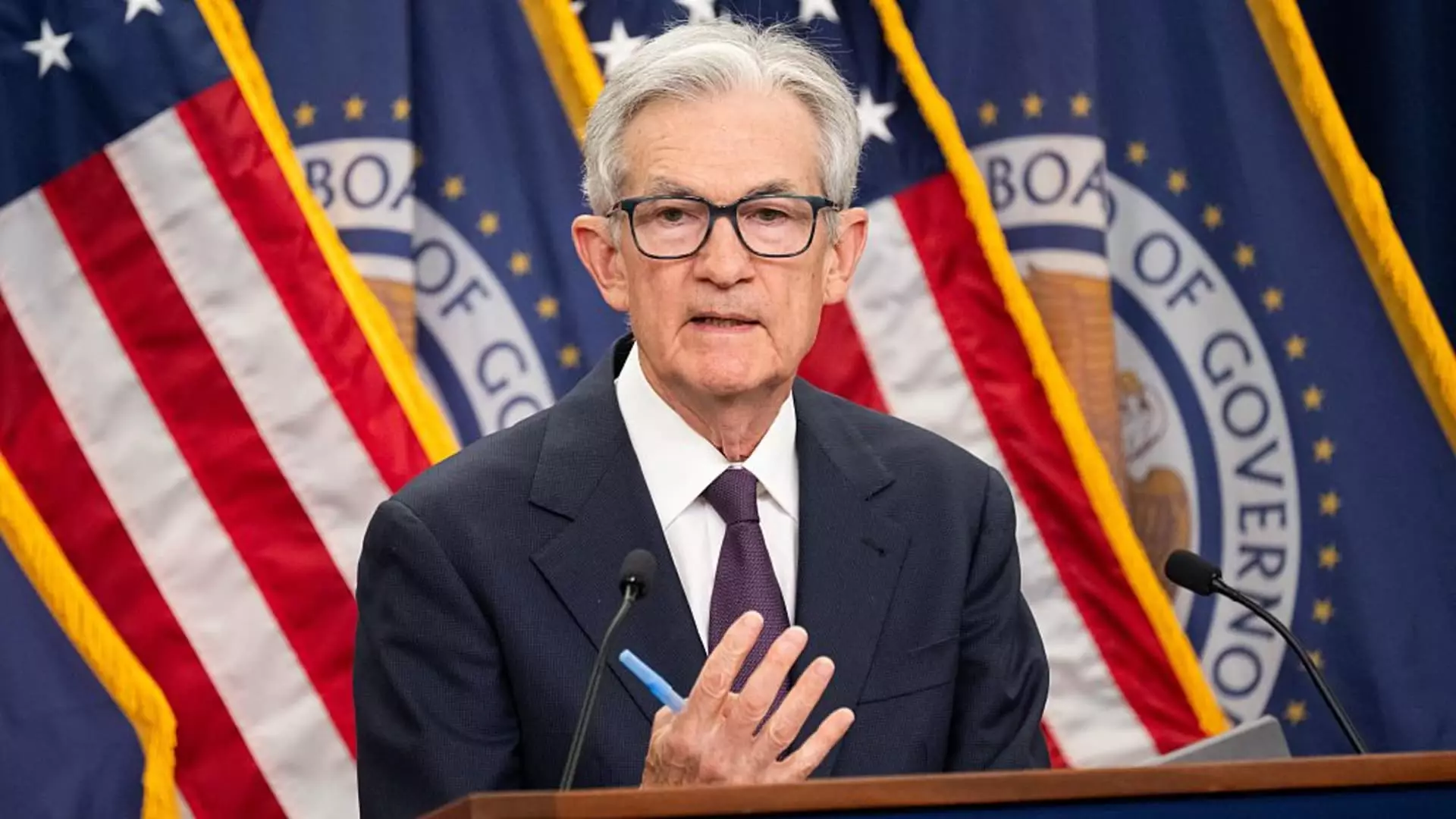In a political ecosystem that is increasingly polarized, the Federal Reserve’s deliberations regarding inflation and tariffs reveal the complexities of modern economic governance. Chair Jerome Powell’s recent statements underscore the Fed’s commitment to managing inflation, particularly as it remains above the desired 2% target. However, amidst rising pressures, it is important to scrutinize how geopolitical maneuvers—especially tariffs—play a role in shaping these economic dynamics. Powell’s cautious wait-and-see approach seems prudent, but one might argue it stumbles into a minefield of conflicting interests that could not only affect monetary policy but also the broader economic climate.
The Tariff Impact: Uncertainty Abounds
Powell articulated that the consequences of tariffs on prices remain ambiguous, a statement that resonates more like a diplomatic dance than a decisive policy direction. This uncertainty contradicts the expectation that a clear, coherent strategy should guide economic stability. How does one justify delaying policy tweaking while the inflation rate hovers unpredictably? Historically, tariffs contribute to one-time price increases, and Powell’s reluctance to jump to immediate conclusions about the long-term implications appears to reflect a desire to avoid rash decisions that could destabilize the economy further.
Here lies a critical concern: tariffs, as introduced by former President Trump, do not operate in a vacuum; they enhance the complexity of inflation management. Economic sanctions are political tools, not merely fiscal instruments, and when wielded recklessly, they can lead to unintended consequences—like inflation creeping even higher. Powell’s stance, asserting that they are “well-positioned to wait,” raises questions about the responsiveness of the Fed as external pressures mount. Does the Fed risk trailing behind a problem that it should actively mitigate?
The Political Underpinning: A Tug-of-War Between the Fed and the White House
Powell’s comments have not only economic ramifications but political implications as well. Trump has made it clear that he is unimpressed with the central bank’s cautious stance, labeling Powell as “dumb” and “hardheaded.” This is part of a broader trend where the executive branch and the Federal Reserve seem increasingly at odds, each vying for control over economic narratives in a hyper-partisan climate. The critique from the President shines a light on a disturbing reality: that political expediency could potentially overshadow sound economic governance.
As political leaders attempt to appropriate the economic narrative for their own agendas, the Fed must grapple with the tension between its independence and external pressure. While Powell expresses a need for patience and diligence, one must ponder whether the Fed is equipped to make objective decisions when political emotions run high. The independence of the Fed has always been vital in establishing credibility and fostering a stable economic environment—something that could be jeopardized in the escalating verbal sparring match with the White House.
Labor Market vs. Inflation: The Balancing Act
Powell’s dual focus on maintaining full employment while controlling inflation presents a fundamental dilemma in Fed policy. It’s encouraging to see the Fed acknowledging the importance of a healthy labor market; however, one has to question whether inflation management is receiving the necessary priority it demands. As unemployment dips and the labor market appears solid, complacency might set in. Full employment is ideal, but if inflation spirals out of control, it not only erodes purchasing power but threatens the very health of the labor market itself.
The Fed’s efforts to navigate the delicate balance between these two forces are commendable, but they are plagued by uncertainty and raised expectations. As different factions within the FOMC voice conflicting opinions on policy adjustments, the cacophony may undermine the Fed’s effectiveness in delivering a unified approach to combating inflation.
Future Outlook: Challenges Ahead
As Federal Reserve policymakers weigh their options, the future outlook remains clouded with ambiguity—particularly in the wake of a volatile geopolitical climate. Futures market indicators reflect a slim chance of rate cuts at upcoming meetings, suggesting that investors harbor skepticism regarding rapid economic improvement. The unease is palpable, for the Fed’s current methods hinge on a theoretical understanding of economic mechanics in an unpredictable environment.
In an era marked by significant policy shifts and external pressures, the crux of the crisis lies not merely in financial metrics but in the broader implications these measurements carry for everyday Americans. The well-being of ordinary citizens should supersede bureaucratic inertia; policy must adapt swiftly, lest we face an economic landscape characterized not by stability but by fragmentation and volatility. In such times, it is crucial that the Federal Reserve not only maintain its credibility but also operate within a framework that genuinely prioritizes the economic security of its constituents.


Leave a Reply